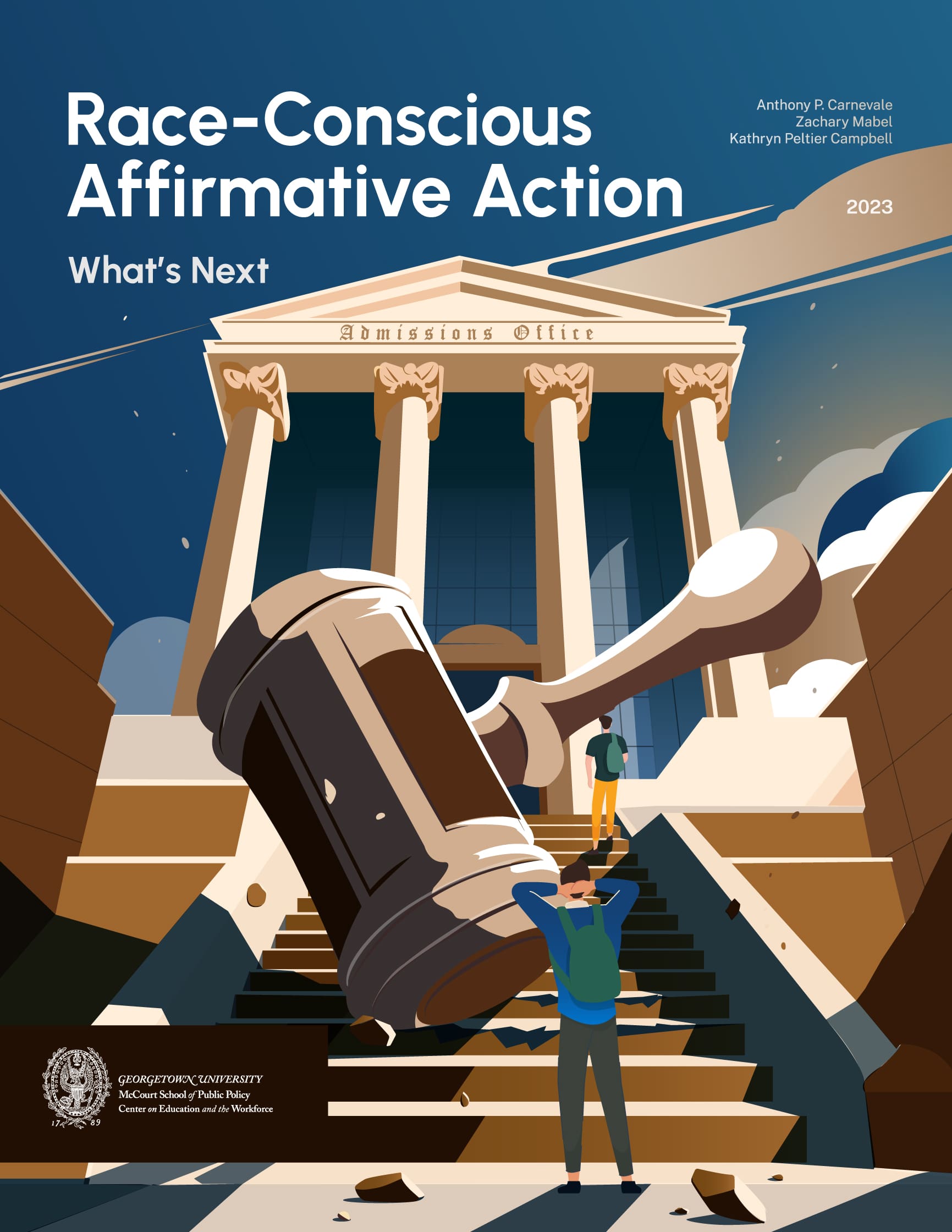
Race-Conscious Affirmative Action
What’s Next
Summary
An expected national ban on the consideration of race in college admissions will threaten the racial and ethnic diversity of students at selective colleges unless these colleges fundamentally alter their admissions practices. Race-Conscious Affirmative Action: What’s Next finds that selective colleges barred from considering race and ethnicity in their admissions decisions may be able to partially claw back some racial/ethnic diversity using class-conscious admissions practices, but they will be extremely unlikely to enroll student bodies that come close to mirroring the demographic diversity of the high school class.

Six Models
In the report, we examine six admissions models and the impact they would likely have on racial/ethnic and socioeconomic diversity if used consistently across selective colleges. All six models assume the elimination of preferences for legacy applicants, student athletes, and other groups that receive admissions boosts for reasons unrelated to academic merit, race/ethnicity, or socioeconomic status (SES).
Two models standardize the use of applicants’ race and ethnicity across all selective colleges nationwide to show what could be possible if race-conscious admissions were expanded rather than prohibited. These models consider the following combinations of admissions factors:
Model 1: Academic merit, socioeconomic status, and race/ethnicity
Model 2: High school class rank, socioeconomic status, and race/ethnicity
Four models exclude race and ethnicity as admissions factors to examine the levels of diversity that can be achieved if the Supreme Court bans race-conscious admissions. These models include the following admissions factors:
Model 3: Academic merit only
Model 5: High school class rank only
Model 4: Academic merit and socioeconomic status
Model 6: High school class rank and socioeconomic status
Six Findings
We find the following:
1. The models that expand rather than prohibit race-conscious admissions practices come the closest to mirroring the racial/ethnic composition of the population graduating from the nation’s high schools.
2. If race-conscious admissions practices are banned, class-conscious alternatives that create preferences for applicants from lower-SES families could be used to partially claw back, maintain, or even slightly exceed current enrollment shares for Hispanic/Latino and Black/African American students, but not for American Indian, Alaska Native, Native Hawaiian, and Pacific Islander students.
3. Without race-conscious admissions practices, maintaining or exceeding existing levels of representation for all underrepresented racial/ethnic groups would require upending the selective college admissions system as we know it, including by greatly expanding the pool of candidates considered for admission and eliminating admission preferences for privileged groups.
4. The most effective way of increasing socioeconomic diversity at selective colleges is to consider race in the admissions process, not to ignore it.
5. Socioeconomic diversity at selective colleges would increase considerably if a larger and more diverse group of students applied and if those admitted received the appropriate financial support to enroll.
6. Achieving more racial/ethnic diversity or socioeconomic diversity at selective colleges would not likely lead to substantial drops in selective colleges’ graduation rates, despite requiring the admission of students with lower grades and test scores.
Importantly, if selective colleges do not also eliminate preferences for legacy preferences, student athletes, and similar groups in the face of a nationwide ban on race-conscious admissions, the levels of racial/ethnic and class diversity that our models suggest are possible will be unlikely to occur.
Conclusion
While the findings indicate that class-conscious admissions models could help selective institutions partially claw back the levels of racial/ethnic diversity currently present among enrolled students, they also demonstrate that maintaining or exceeding existing levels of representation without race-conscious admissions would require a complete transformation of the admissions system. Selective colleges would need to change both how they evaluate applicants and whom they consider for admission. In sum, when it comes to the goal of equalizing college opportunity across advantaged and disadvantaged racial/ethnic and socioeconomic groups, there is no good substitute for the consideration of race.

Resources
Race-Conscious Affirmative Action: What’s Next finds that an expected national ban on the consideration of race in college admissions will threaten the racial and ethnic diversity of students at selective colleges unless these colleges fundamentally alter their admissions practices.

